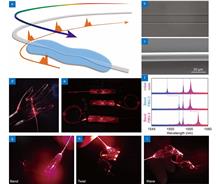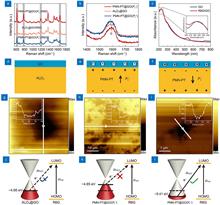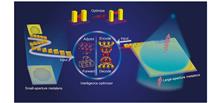 View fulltext
View fulltext
Systemic blood circulation is one of life activity’s most important physiological functions. Continuous noninvasive hemodynamic monitoring is essential for the management of cardiovascular status. However, it is difficult to achieve systemic hemodynamic monitoring with the daily use of current devices due to the lack of multichannel and time-synchronized operation capability over the whole body. Here, we utilize a soft microfiber Bragg grating group to monitor spatiotemporal hemodynamics by taking advantage of the high sensitivity, electromagnetic immunity, and great temporal synchronization between multiple remote sensor nodes. A continuous systemic hemodynamic measurement technique is developed using all-mechanical physiological signals, such as ballistocardiogram signals and pulse waves, to illustrate the actual mechanical process of blood circulation. Multiple hemodynamic parameters, such as systemic pulse transit time, heart rate, blood pressure, and peripheral resistance, are monitored using skin-like microfiber Bragg grating patches conformally attached at different body locations. Relying on the soft microfiber Bragg grating group, the spatiotemporal hemodynamic monitoring technique opens up new possibilities in clinical medical diagnosis and daily health management.
A recent application of a simple, all-dry, abrasive transfer of 2D materials on paper demonstrates the potential of two-dimensional tungsten disulfide (WS2) as the sensitive material of a flexible photoconductive detector. The devices show really good responsivity over a bandwidth spanning from near infrared to ultraviolet and could open new avenues towards disposable optoelectronics systems.
Surface-enhanced Raman scattering (SERS) substrates based on chemical mechanism (CM) have received widespread attentions for the stable and repeatable signal output due to their excellent chemical stability, uniform molecular adsorption and controllable molecular orientation. However, it remains huge challenges to achieve the optimal SERS signal for diverse molecules with different band structures on the same substrate. Herein, we demonstrate a graphene oxide (GO) energy band regulation strategy through ferroelectric polarization to facilitate the charge transfer process for improving SERS activity. The Fermi level (Ef) of GO can be flexibly manipulated by adjusting the ferroelectric polarization direction or the temperature of the ferroelectric substrate. Experimentally, kelvin probe force microscopy (KPFM) is employed to quantitatively analyze the Ef of GO. Theoretically, the density functional theory calculations are also performed to verify the proposed modulation mechanism. Consequently, the SERS response of probe molecules with different band structures (R6G, CV, MB, PNTP) can be improved through polarization direction or temperature changes without the necessity to redesign the SERS substrate. This work provides a novel insight into the SERS substrate design based on CM and is expected to be applied to other two-dimensional materials.
Metalenses have gained significant attention and have been widely utilized in optical systems for focusing and imaging, owing to their lightweight, high-integration, and exceptional-flexibility capabilities. Traditional design methods neglect the coupling effect between adjacent meta-atoms, thus harming the practical performance of meta-devices. The existing physical/data-driven optimization algorithms can solve the above problems, but bring significant time costs or require a large number of data-sets. Here, we propose a physics-data-driven method employing an “intelligent optimizer” that enables us to adaptively modify the sizes of the meta-atom according to the sizes of its surrounding ones. The implementation of such a scheme effectively mitigates the undesired impact of local lattice coupling, and the proposed network model works well on thousands of data-sets with a validation loss of 3×10?3. Based on the “intelligent optimizer”, a 1-cm-diameter metalens is designed within 3 hours, and the experimental results show that the 1-mm-diameter metalens has a relative focusing efficiency of 93.4% (compared to the ideal focusing efficiency) and a Strehl ratio of 0.94. Compared to previous inverse design method, our method significantly boosts designing efficiency with five orders of magnitude reduction in time. More generally, it may set a new paradigm for devising large-aperture meta-devices.
Neuromorphic photonic computing has emerged as a competitive computing paradigm to overcome the bottlenecks of the von-Neumann architecture. Linear weighting and nonlinear spike activation are two fundamental functions of a photonic spiking neural network (PSNN). However, they are separately implemented with different photonic materials and devices, hindering the large-scale integration of PSNN. Here, we propose, fabricate and experimentally demonstrate a photonic neuro-synaptic chip enabling the simultaneous implementation of linear weighting and nonlinear spike activation based on a distributed feedback (DFB) laser with a saturable absorber (DFB-SA). A prototypical system is experimentally constructed to demonstrate the parallel weighted function and nonlinear spike activation. Furthermore, a four-channel DFB-SA laser array is fabricated for realizing matrix convolution of a spiking convolutional neural network, achieving a recognition accuracy of 87% for the MNIST dataset. The fabricated neuro-synaptic chip offers a fundamental building block to construct the large-scale integrated PSNN chip.













